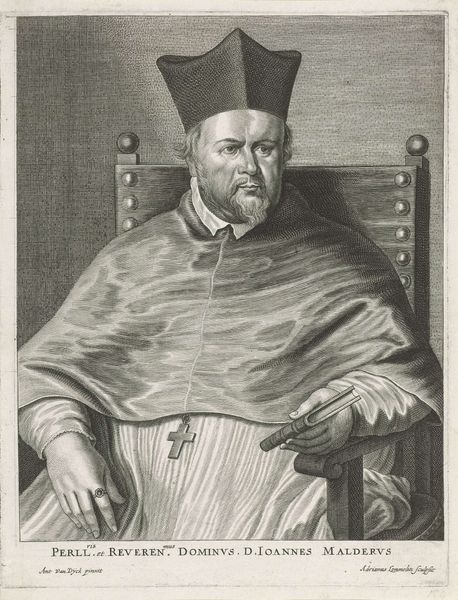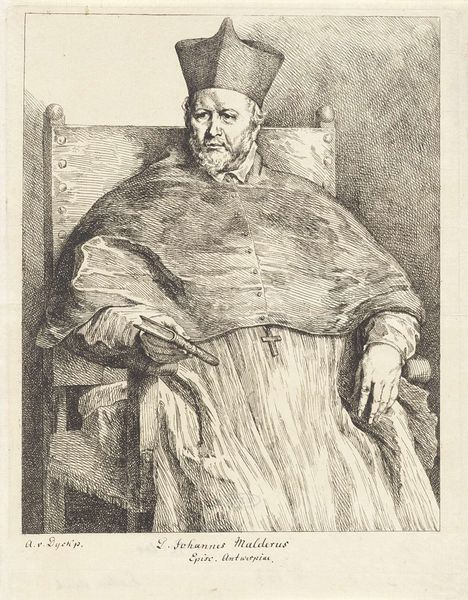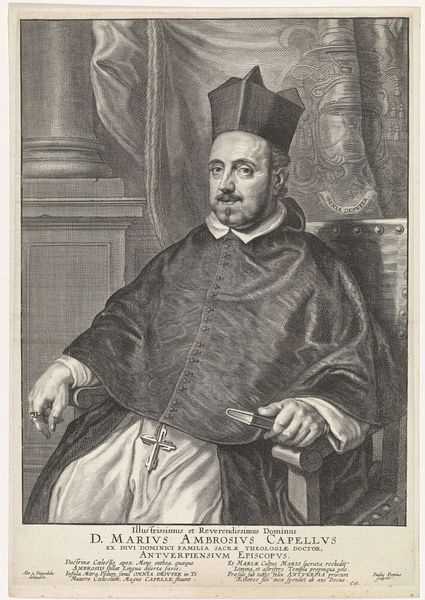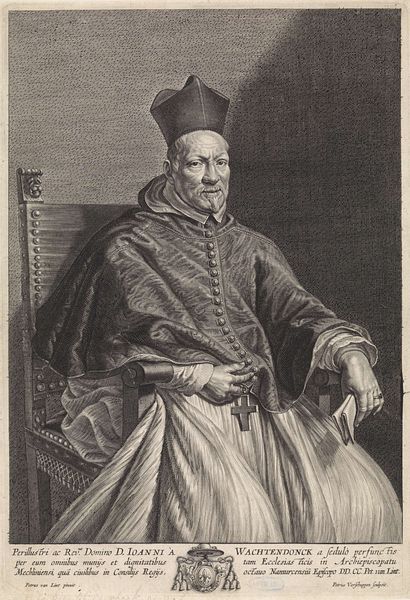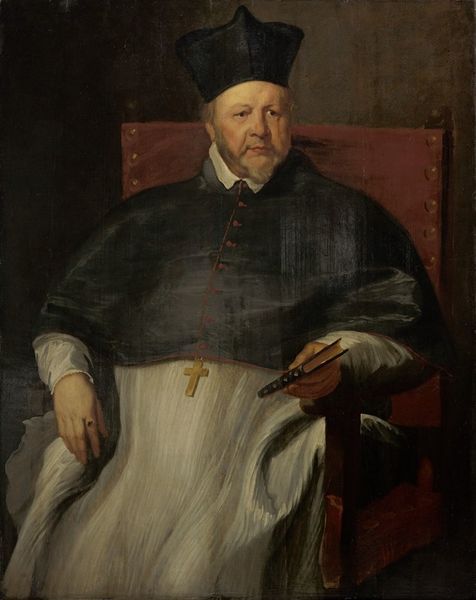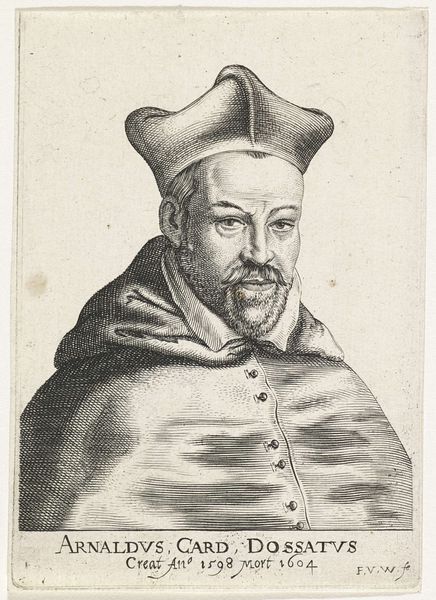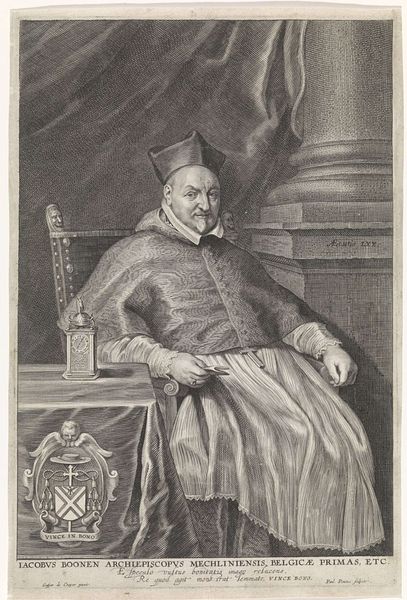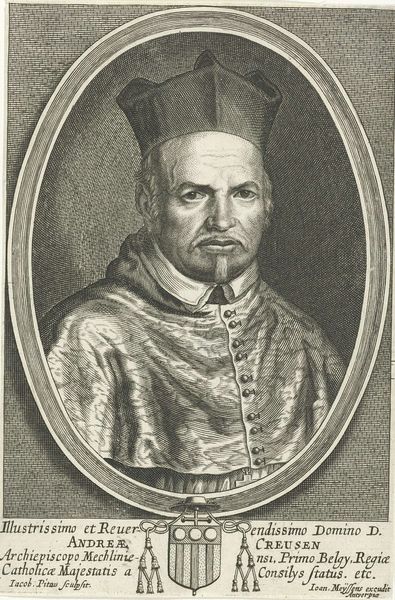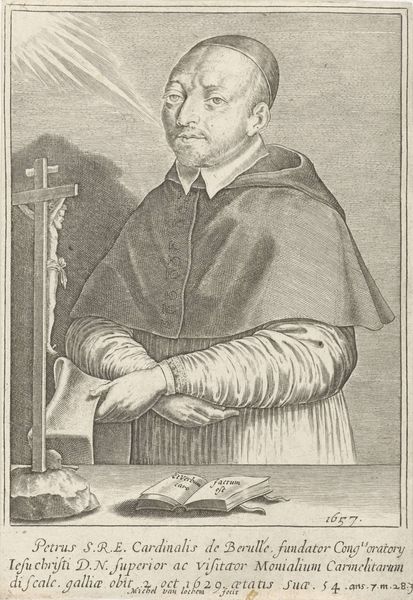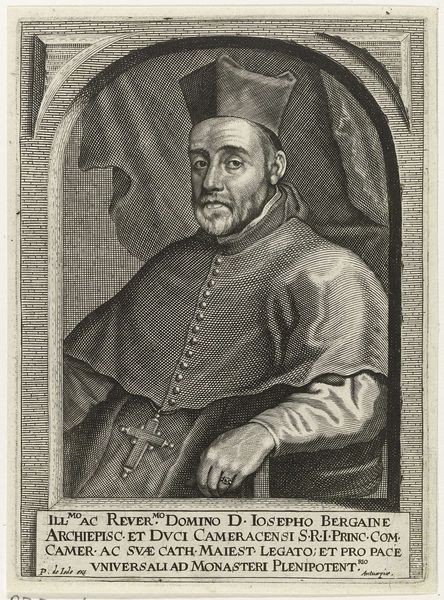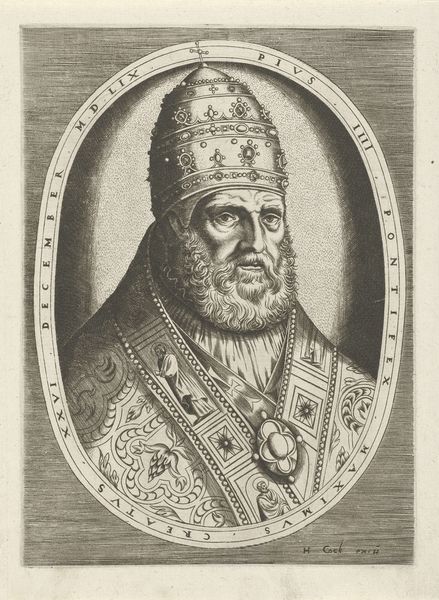
drawing, print
#
portrait
#
pencil drawn
#
drawing
#
light pencil work
#
photo restoration
# print
#
pencil sketch
#
old engraving style
#
charcoal drawing
#
portrait reference
#
pencil drawing
#
men
#
portrait drawing
#
pencil work
Dimensions: Sheet: 10 7/16 × 7 7/8 in. (26.5 × 20 cm) cut on and fractionally within the platemark at top
Copyright: Public Domain
Editor: Here we have Wenceslaus Hollar’s "Bishop Jan van Malderus," a print from 1645 currently housed at the Met. The subject, posed formally in his ecclesiastical garments, looks pretty imposing, yet the etching itself has this delicate, almost fragile quality to it. How do you read this portrait? Curator: It's crucial to situate Hollar's Bishop within the sociopolitical dynamics of its time. Think about the power structures at play: The Catholic Church, the individual's status, and Hollar's role as a documentarian of authority. How might the print both reinforce and perhaps subtly critique those structures? The Bishop holds a writing tool as if to assert a knowledge associated with privilege. Who, at the time, had the freedom to practice knowledge? Editor: That's interesting. It portrays him as a man of power, but perhaps also reveals the inherent exclusivity of that power? How do you mean? Curator: Exactly. The detailed rendering of his vestments emphasizes status and wealth at a time when many lacked basic necessities. And consider, too, how portraiture itself functioned as a tool of the elite. It's also a reminder that access to representation, then and now, is rarely equitable. The bishop has an inscription just below him: Who do you think this message is intended for? Editor: Primarily people with access to the resources and literacy that makes engagement possible. Thinking about the print this way definitely opens it up beyond just being a historical depiction of a bishop. Curator: Precisely. We are dealing with a visual statement that is rooted in intersectional societal concerns. Editor: I hadn't thought about it that way. It highlights that a portrait is always about more than just the individual. Thanks! Curator: Absolutely. Keep questioning who holds power, how they maintain it, and how art can challenge or perpetuate that dynamic.
Comments
No comments
Be the first to comment and join the conversation on the ultimate creative platform.
